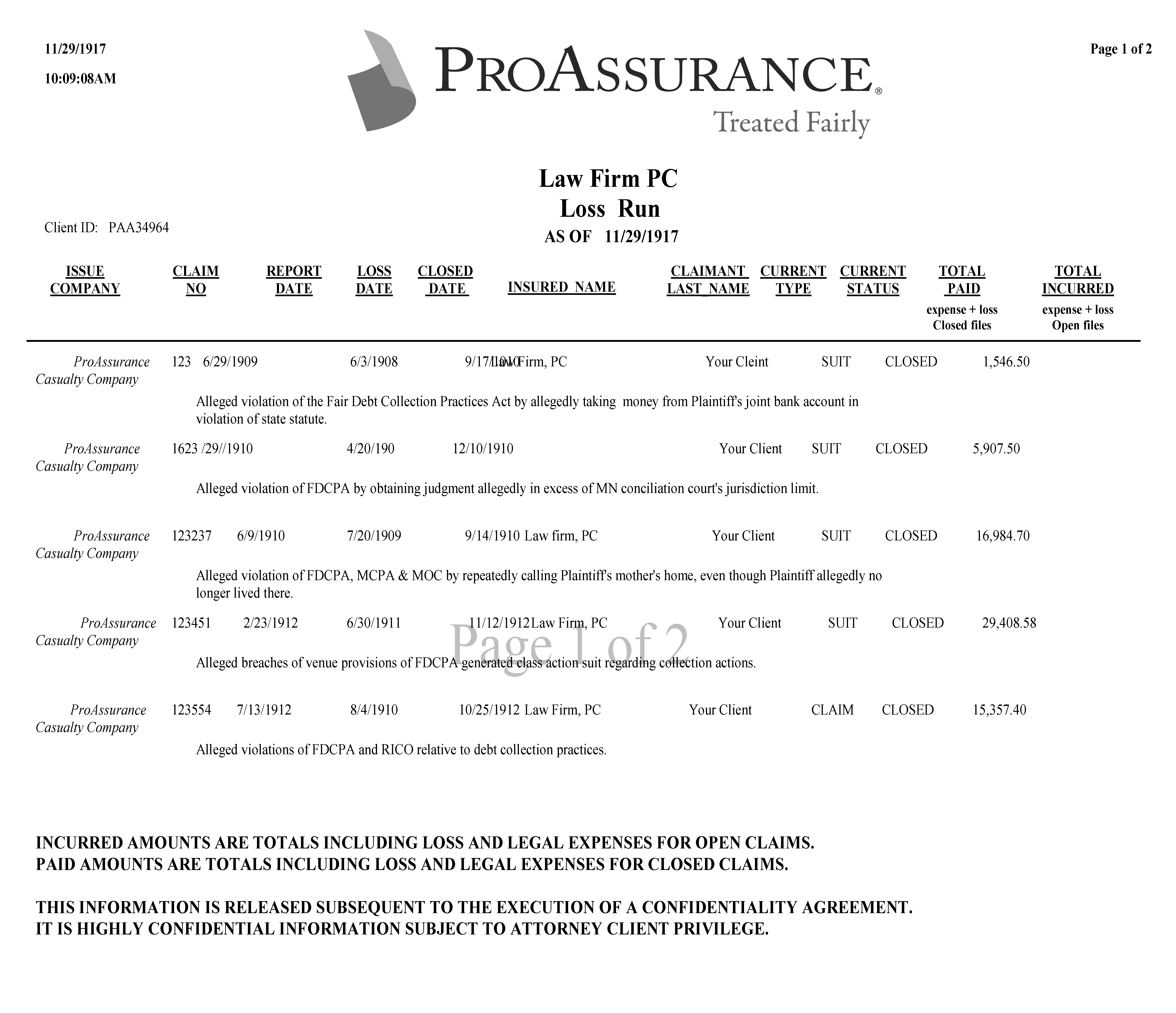 With normal (non E&O) commercial insurance it is common practice for Insurers to require loss runs to provide a quotation. Insurance carrier loss runs are a report produced by an insurer that provides information on all claims that have been reported to an insurer during the time that the insurer provided insurance coverage. With malpractice insurance the loss runs not only include actual claims paid, but incidents that may not ever turn into a claim and/or disciplinary proceedings.
With normal (non E&O) commercial insurance it is common practice for Insurers to require loss runs to provide a quotation. Insurance carrier loss runs are a report produced by an insurer that provides information on all claims that have been reported to an insurer during the time that the insurer provided insurance coverage. With malpractice insurance the loss runs not only include actual claims paid, but incidents that may not ever turn into a claim and/or disciplinary proceedings.
An important concept on the reported incidents that firms forget is reporting the incident protects the firm should the incident later turn into a claim. Unlike property insurance, the time between an issue being reported and a claim being made could be a number of years. Remember malpractice policies are claims-made coverage. In general, once the claim is reported to a claims-made insurer, the insurer that the incident was made to is on the hook for that claim even if the claim is made a number of years later and the firm has a different insurance carrier. The claim is considered ‘made’, once the incident is reported. If a firm attempts to report a claim that was known prior to the current policy being inforce, the insurer may likely deny coverage for prior knowledge.
Every insurer’s practice as to what loss run information is reported differs slightly. The loss runs can include; policy year claim made, date claim made, claim number, claimant or party reported claim, if claim is open or closed, if closed with closed, indemnity amount paid, claims expenses, amounts reserved for the claim, etc. As claims information is considered confidential information it may require a written release of some type from the insured and/or insured’s agent to obtain the loss runs. Every state insurance department requires that insurers or MGAs (Managing General Agency) release loss information to the insured in a timely manner when requested in writing or other acceptable means.
Insurance carrier loss runs are a key underwriting tool for assessing an insurance exposure and providing proper coverages and pricing. It is common practice for an attorney malpractice underwriter to require loss runs in the following situation:
1. Claims from another insurer are indicated on the application or indication form
2. Disciplinary matters were reported on the application
3. The law firm has been “non-renewed” in the past
4. The law firm has purchase an ERP (Extended Reporting Period Endorsement)
5. There has been a gap in coverage for an unexplained reason
6. The law firm’s premium is unusually high given the normal exposure for this type of law firm
7. The law firm has been written by a surplus lines insurer that is known to specialize in distressed law firms.
8. The law firm was written by the insurer with open claims shown on the initial loss runs. The underwriter at renewal will what to see development occurred to that open claim
Any of the above reasons not only affects potential pricing for a law firm, but likely impacts the acceptability of the law firm for a particular insurer’s attorney malpractice program. It is common practice for an underwriter to refuse to provide terms if any of the above factors are noted without first seeing insurance carrier loss runs.